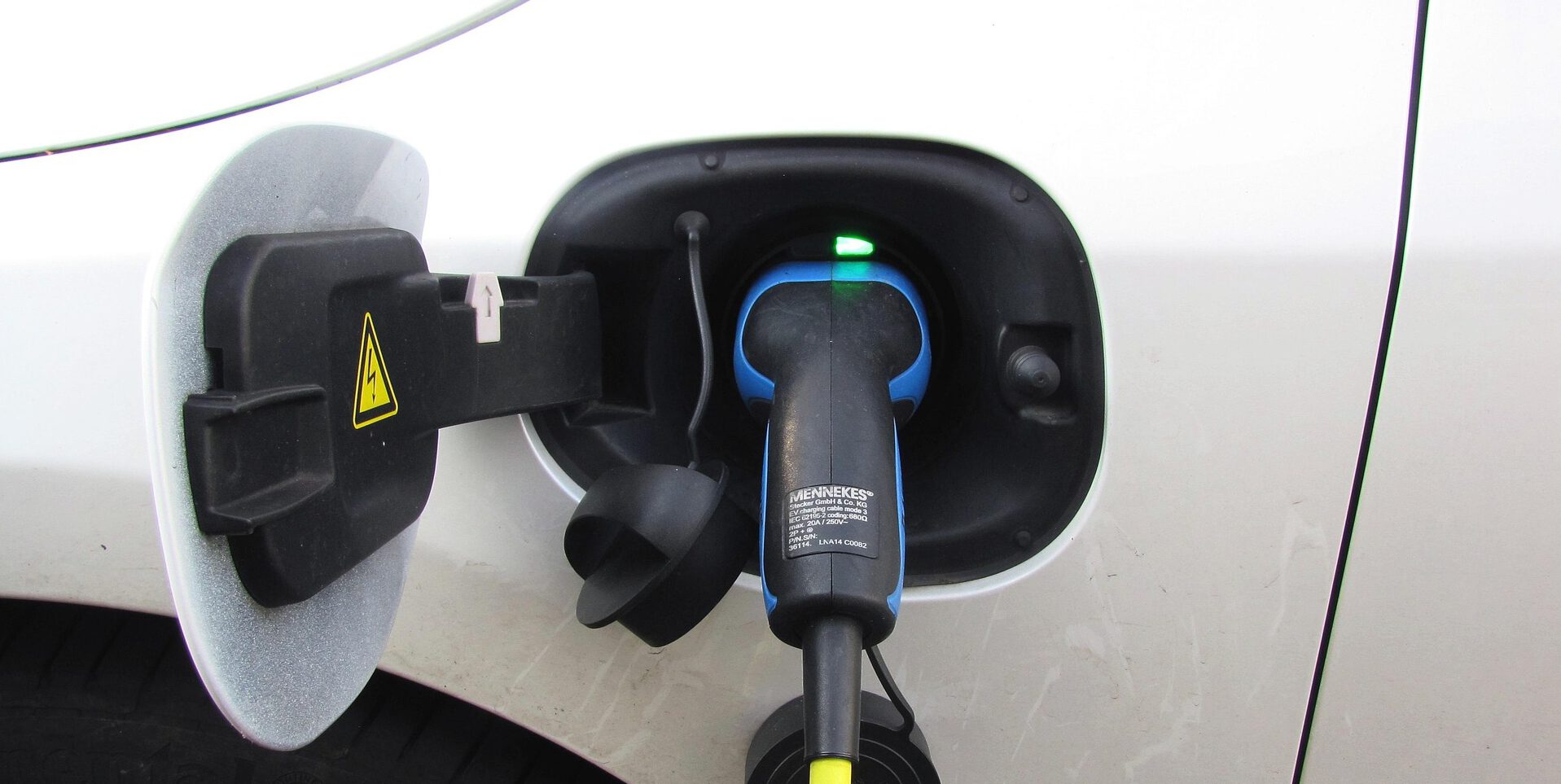THE CASE FOR NOT KILLING THE HYBRID

Author: Anders Nyström Picture: Pixabay
With battery electric passenger car sales hovering around 15% of total registrations in the EU on the back of an obvious lack of consumer demand, and battery electric heavy-duty trucks trailing at around 1% of the total market, it is time to take a step back and re-think the de-carbonization policies of the EU. Much of the targeted CO2 emission reductions can be achieved without trying to force industry and consumers to convert to 100% battery electric propulsion way before technology and infra-structure is ready for it. The current policies are missing out on big portions of affordable de-carbonization opportunities in the form of smart hybrid powertrains.
The different aspects of the stagnant European BEV market
The sales of battery electric passenger cars took off globally in 2021, largely due to massive government funded incentives and bonus-malus programs, attempting to favour battery electric cars and penalize traditional petrol- and diesel-powered cars. The purpose was clear and simple. Political means were used to drive elimination of direct CO2 emissions from road transportation.
In various countries the same type of government funded incentives were also implemented to increasingly electrify the public transportation vehicle fleet.
While EU legislation has focused so far entirely on eliminating tailpipe emissions, there is still limited understanding of the total life cycle aspect of a vehicle, making the CO2 emissions from the production chain of vehicles a blind spot. This poses a serious risk that the dramatic transformation the vehicle industry is going through right now may have to be scaled back once the total life cycle aspects are fully understood and integrated into legislation and taxation of vehicles. This is particularly regrettable since portions of the vehicle industry supply chain is currently suffering from financial difficulties due to over-investment in technologies entirely focused on tailpipe emission reduction. Seen in this light, there is a strong argument that the EU’s ban on all sales of petrol- and diesel-powered cars from 2035 may be proven to be a big and expensive mistake, both for the industry and for the planet.
Scientific status for life-cycle CO2 emissions
For passenger cars, a good number of comparative studies have been made on life cycle CO2 emissions for various powertrain technologies and fuels, including petrol, diesel, mild-hybrids, plug-in hybrids, battery electric, biogas etc. One common finding across all these studies is that the production of the battery in an electrified car gives it a relative starting-point (0 km) disadvantage compared to a traditional combustion engine car. How big that disadvantage is depends on the size of the battery and the electricity mix used for production of the battery. An estimated median value is a 40% higher amount of CO2 emissions from a full battery electric car compared to a same-size combustion engine car at 0 km. In a worst-case scenario, with a dirty electricity mix, the 0 km disadvantage is never made-up for over its life cycle, and a petrol-powered car can have a lower life-cycle CO2 emissions value than a similar-size full battery electric car, which was shown in a recent study by Yuksel et al (2024) using various US electricity mixes as an assumption.
For commercial vehicles, such as short- and long-haul trucks, city buses, coach buses and various forms of utility vehicles there are only a handful of studies made. In order for policy makers as well as industry to make the right strategic decisions about future commercial vehicle powertrains and fuels, much more research is needed, especially given the wider variety of usage patterns in comparison to passenger cars.
The most useful studies made on commercial vehicles have been targeting city-buses due to its relatively confined usage, steady driving routes and ease of monitoring. In a study by Nordelöf et al published in Transportation Research 2019 it is concluded that a plug-in hybrid bus driven on both electricity and HVO biodiesel causes approx. 22% less CO2 emissions per person-km of duty than a full battery electric bus charged with an EU electricity mix. This advantage of the plug-in hybrid comes in addition to the lower production induced emissions of the plug-in hybrid’s smaller battery, compared to the full battery electric bus. The plug-in hybrid bus can be driven on electricity in zero-emission zones, use near CO2-neutral biodiesel outside of zero-emission zones and carry a smaller battery, lowering its total energy consumption.
In a meta-study by Zhang et al (2022) on heavy duty trucks, the plug-in hybrid alternative proved to be the most favourable both from the aspect of life-cycle CO2 emissions and total cost of ownership. Even if this study was made assuming a Chinese electricity mix which is less clean than the EU average, it proves that the full battery electric vehicle is not the sole solution to effective de-carbonization and may even be the lesser good for certain driving patterns.
Conclusions and recommendations
From the scientific findings summarized above, we can conclude that electrified vehicles should not carry a bigger battery than necessary; that hybrid electric powertrains provide a smart de-carbonization solution for some vehicles and usage patterns, and that the full battery electric strategy that the EU has embarked on is over-simplified and premature. Battery electric propulsion may be closer to a universal solution once battery technologies have developed to be more energy efficient during the production phase and the electricity mix has become clean enough to make up for the 0 km CO2 emissions disadvantage of the very big batteries required to satisfy the range needs of all types of vehicles. In the meantime, hybrid vehicles should not be disqualified by bonus/malus programs or legislation since they can contribute significantly to near-term de-carbonization.
Today’s sales statistics clearly prove that, for most car consumers and fundamentally all commercial truck fleet owners, the full battery electric alternatives are the proverbial square peg in a round hole and this will not change until both technology and charging infra-structure have caught up, which is still a long way away. EU legislators must take this fact into serious consideration.
In order to avoid sending the commercial vehicle industry into the same crisis as the light vehicle market has experienced, jeopardizing both OEMs and suppliers due to enormous investments being written off for lack of market demand, we recommend the following:
- Accelerate research into life cycle CO2 emissions and depart from the tailpipe-only perspective that has been dominating until now. This will provide long term stability to emission requirements and avoid costly re-focusing once life cycle emissions are understood and accepted.
- Adopt technology neutral policies to benefit the best life cycle solution for each area of vehicle usage.
- In the meantime, equal the playing field between full battery electric vehicles and various degrees of hybrids so that government incentives and penalties help to accelerate gradual de-carbonization through hybridization, instead of waiting for full battery electrification to become economically viable.
About the Author: Anders Nyström is Vice Chair of the Executive Board at Hybrid Alliance e.V., the leading global platform promoting hybrid powertrain technologies for commercial vehicles. He brings over 40 years of international experience across the automotive and industrial sectors, with a career spanning executive roles in manufacturing, purchasing, and sustainability-driven transformation. From 2019 to 2024, Nyström served as President and CEO of Bulten Group, where he led the company’s operational expansion and sustainability shift, aligning its product strategy with the electrification of commercial vehicles. Prior to Bulten, he held senior roles at Kongsberg Automotive, Volvo Cars, and Ford Motor Company, including EVP of Interior Systems and VP of Purchasing, managing global sourcing and product development for powertrain and interior systems. In addition to his role at Hybrid Alliance, Nyström is a board member at Sparbanken Alingsås, an advisor to Sentient, and founder of Novamnis Consulting AB, focusing on mobility, electrification, and industrial strategy.


